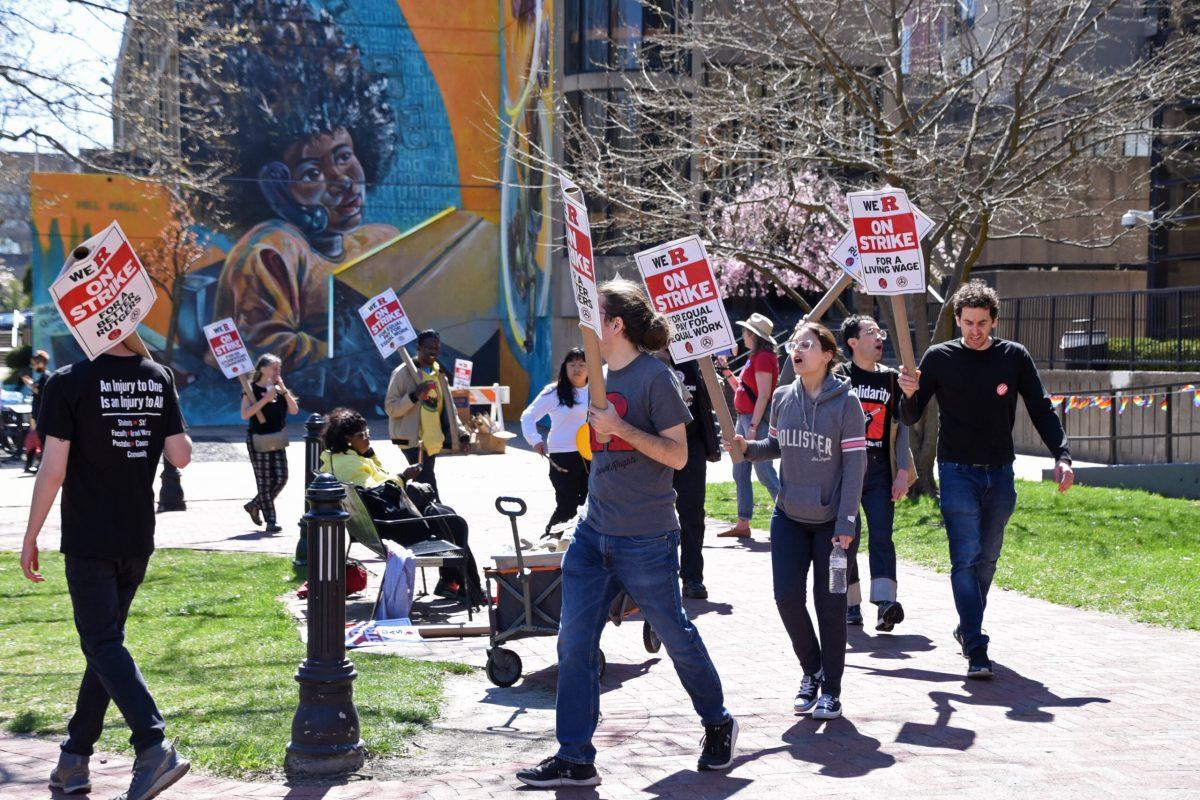For an intense week from April 10 to April 15, an unprecedented strike on all four Rutgers campuses — New Brunswick, Camden, Newark, and Biomedical Health Sciences — brought class to a standstill and all eyes on New Jersey. The event was the first strike in the state university’s 257-year long history by academics and faculty; it revolved around the issue of low wages and a lack of job security for graduate workers and untenured faculty.
The story began in June 2020, as the COVID-19 pandemic raged across the United States. Rutgers, the largest public university in New Jersey and the state’s fourth-largest non-governmental employer, declared a fiscal emergency and laid off over 1,000 staff members, including adjunct faculty. This number composed over 5% of the university’s total union membership, raising concerns about the job security of other employees.
Although the issue was resolved in 2021, the labor contract between the Rutgers administration and the Coalition of Rutgers Unions, made up of the university’s 19 unions, expired in June 2022. For eight months, negotiations failed to produce another contract. On Feb. 28 of this year, the coalition opened up a vote for strike authorization; 80% of union members voted, and 94% of respondents voted for a strike.
What ensued was one of the highest-profile protest actions in the country. Three unions — Rutgers AAUP-AFT, or the American Association of University Professors – American Federation of Teachers; PTLFC-AAUP-AFT, or the Rutgers Adjunct Faculty Union; and the Biomedical and Health Sciences of New Jersey union chapter — went on strike; they collectively represent 9,000 faculty workers across all Rutgers campuses.
Rutgers AAUP-AFT released a joint statement on the matter that read, “The administration doesn’t understand that we are determined to fight together for equal pay for equal work, a living wage for all, real job security, race and gender equity, and a fair salary increase. We have no other choice than to go on strike to build a university that truly values its workers and its students.”
The goals of the strike were to increase the salaries of full-time faculty, guarantee funding for graduate students, increase the salary per credit for part-time faculty, and improve job security for adjunct faculty members, amongst other requests. During the week of the strike, over 67,000 students were affected, and the vast majority of classes did not meet.
Dr. Jonathan Holloway, president of Rutgers University, primarily communicated with Rutgers community members through email. Regarding the beginning of the strike, he commented, “To say that this is deeply disappointing would be an understatement, especially given that just two days ago, both sides agreed in good faith to the appointment of a mediator to help us reach agreements.”
A mediator did indeed become involved: in another unprecedented event, it was none other than New Jersey governor Phil Murphy who invited both sides to his Trenton office to discuss resolutions to the crisis. The Rutgers administration was interested in filing an injunction against strikers, arguing that “New Jersey courts consistently and expressly have held that strikes by New Jersey public employees are illegal.”
However, Murphy personally urged Holloway to refrain from taking any legal action against the strikers. “The Governor … asked us to delay taking legal action asking the courts to order strikers back to work so that no further irreparable harm is caused to our students and to their continued academic progress,” announced Rutgers spokesperson Dory Devlin.
Politicians and activists from around the state weighed in on the matter, with Newark Mayor Ras Baraka issuing, “I stand with the faculty unions. Do better, Rutgers.” United States Senator Bernie Sanders expressed support as well, and New Jersey Democratic Representative Frank Pallone visited the picket lines to show solidarity with strikers.
On the morning of April 15, the university and unions reached an agreement with numerous clauses as a compromise, allowing classes to resume the following week. This framework included:
• Salary increase of at least 14% by July 1, 2025 for full-time faculty and educational opportunity fund counselors.
• 43.8% increase in per-credit salary rate for part-time lecturers over the four years of the agreement and strengthening of their job security.
• 27.9% increase in the minimum salary for postdoctoral fellows and associates over the same contract period.
• Health care coverage, free tuition and fees, and 10-month salary increase to $40,000 over the course of the contract for graduate students.
These contracts are retroactive for up until July 1, 2022, and will provide retroactive payments to employees.
With the agreement above in place, seniors were allowed to continue preparing for graduation with classes resuming on Monday, April 17.
“We all were out there and students were out there and we did this as a university,” said Amy Higer, the president of PTLFC-AAUP-AFT, while thanking students, tenured faculty, and the community for the widespread support of the strike. “We all recognize that something was not right at Rutgers.”
“Nothing we do is as important as living up to the expectations that our students and their families have of us to be fully supportive of them and nurturing of their academic ambitions and dreams,” concluded Holloway.




























